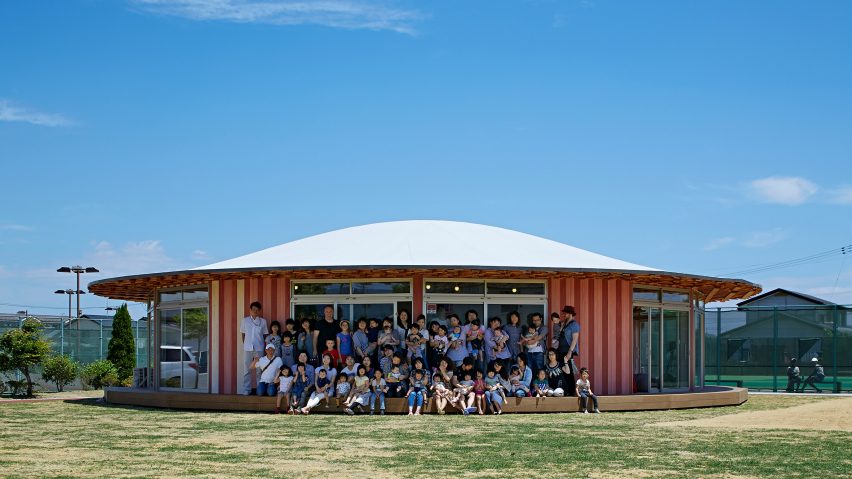The architects behind 16 disaster relief shelters built following the Tōhoku earthquake as part of Toyo Ito's Home-for-All project have shared their thoughts on the buildings that are still in use as community centres.
Home-for-All saw projects realised in Japan to provide respite for people affected by the disaster and to aid long-term community rebuilding efforts.
The volunteer-run project saw 16 centres built that were designed by Toyo Ito, Kazuyo Sejima, Riken Yamamoto, Astrid Klein, Mark Dytham, Yukinari Hisayama, Michiko Okano, Jun Yanagisawa, Tetsuo Kondo, Maki Onishi and Yuki Hyakuda.
This month marks the 10 year anniversary of the magnitude 9.0 earthquake that occurred off of the Pacific coast of Tōhoku, which caused a devastating tsunami with waves over 40 metres high.
The Tohoku earthquake was the strongest ever recorded to hit Japan, killing 15,000 people and displacing over 200,000 others. The tsunami also inundated a power plant and caused the Fukushima Daiichi nuclear disaster.
Ten years after the disaster the architects involved in the relief scheme reflected on what the project means to them.
"Home-for-All has two purposes," explained Japanese architect Toyo Ito, who set up the non-profit.
"First it is a place where people would like to gather every day, even if they do not have a particular reason for doing so," said the Pritzker Prize winner. "The other purpose is to be a place where we can reconsider the architecture that we have created."
As part of the project, Klein Dytham Architecture built a community hall for the city of Sōma, which provides a safe indoor play area away from radiation for children in Fukushima Prefecture.
"A Home For All instils a sense of pride in the community during difficult times," said Tokyo-based architect Mark Dytham, co-founder of Klein Dytham Architecture.
"They are not just simple temporary shelters, but are built with love, care and pride for the community to feel at home."
Riken Yanamoto and Field Shop contributed by designing rows of temporary housing in Heita organised around a community centre with an open hearth under a central chimney, where people can gather on cold evenings.
SANAA built a steel and wood pavilion with an undulating roof along the coast of Tsukihama for fishermen to rest and work in the shade. Chinese architect Yang Zhao built a concrete marketplace for the same fishing community nearby.
"Personally, Home-for-All is also a place where I have been taught about things that I had not even thought of before," said SANAA co-founder Kazuyo Sejima.
"When we held our first meeting, I asked what kind of home would be nice. A participant responded, 'Everything has been washed away. Moving forward, we are going to build our new city. We are going to build it ourselves.'" she explained.
"Up to that point, when I designed architecture, it was because somebody wanted me to come up with a design because there were certain circumstances and certain issues. I thought my involvement was to complete these requests," she continued.
"I was taught in a profound manner that instead, there was a need for us to think ourselves about what kind of place was really necessary and that we can and must create the future that we will live in ourselves."
All of the architects' thoughts were compiled in a video released to mark the anniversary.
Photos courtesy of Home-for-All.

